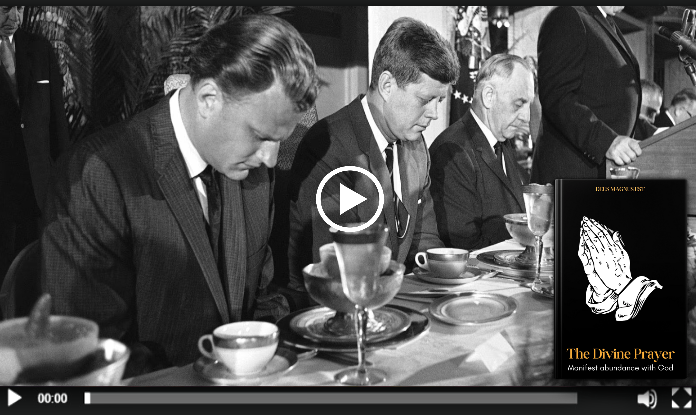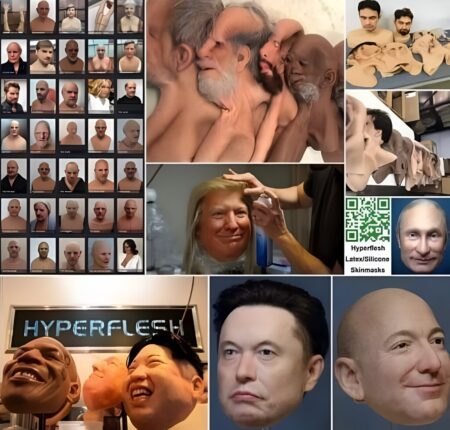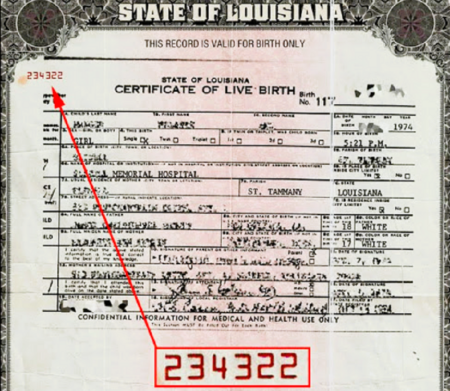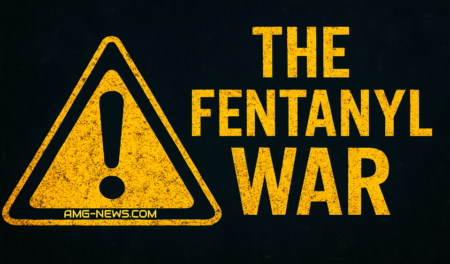JFK’s $4 Billion Bombshell: The Executive Order That Declared War on the Federal Reserve
Ready to uncover the truth? Sick of the lies? Join our Telegram Channel now. It’s time for the real story! My gratitude to all my readers!
The shocking truth about JFK’s war on the Federal Reserve: With Executive Order 11110, Kennedy declared financial independence for America—only to be assassinated months later. Was his bold move to bypass the banking elite the reason for his death? They’ve buried this story for decades. Read it now before it disappears again.
The Day JFK Declared War on the Federal Reserve—and Paid the Ultimate Price
On June 4, 1963, John F. Kennedy fired the first shot in a war most Americans didn’t even know existed. With the stroke of a pen, he signed Executive Order No. 11110, an audacious attempt to wrest control of America’s money supply from the shadowy, private entity known as the Federal Reserve. It wasn’t just a policy move—it was a direct threat to the entrenched powers that had controlled the nation’s economy for decades.
What happened next is no coincidence. Less than six months later, on November 22, 1963, Kennedy was dead, gunned down in broad daylight on a Dallas street. Was it a random act of violence by a “lone gunman,” or was it something far darker—a chilling message from the forces he dared to challenge?
This isn’t just a story about one man’s bold vision; it’s a story about power, greed, and the ultimate price of defiance.
DON’T MISS THIS
The Federal Reserve: The Hidden Ruler of America
Before we dive into JFK’s courageous stand, let’s expose the elephant in the room: the Federal Reserve, the so-called “central bank” of the United States. Don’t be fooled by its official-sounding name—it’s not part of the government. This is a privately owned cartel of banks that has monopolized America’s money supply since 1913.
Here’s how it works: The U.S. government doesn’t print its own money—it borrows it from the Federal Reserve. And guess what? The Fed doesn’t lend this money out of charity. It charges interest. This means every dollar in circulation comes with a debt tag attached, plunging the nation deeper into financial slavery with every passing day.
For decades, this system has enriched the few at the expense of the many, creating a perpetual cycle of debt that keeps everyday Americans struggling while a small elite grows ever more powerful.
Enter John F. Kennedy.
Kennedy’s Silver Bullet: Executive Order No. 11110
On June 4, 1963, Kennedy struck a blow straight to the heart of this corrupt system. With Executive Order No. 11110, he authorized the U.S. Treasury to issue $4 billion in $2 and $5 notes backed by the nation’s silver reserves. This wasn’t just bureaucratic tinkering—it was a revolution.
For the first time in decades, the U.S. government was creating money free of the Federal Reserve’s stranglehold. No debt. No interest. Just currency backed by real, tangible assets. This was money for the people, not for the bankers.
And it terrified the establishment. Why? Because it was proof that the United States didn’t need the Federal Reserve. It was a declaration of independence from a system designed to enslave the nation in endless debt.
Breaking News: The Secret to Male Power Unveiled – Big Pharma’s Worst Nightmare is 100% Natural!
Why the Establishment Couldn’t Let This Stand
Make no mistake: Kennedy’s actions weren’t just bold—they were dangerous. The Federal Reserve and its backers had spent decades consolidating their power, ensuring that no president or policymaker could challenge their monopoly. Kennedy’s Executive Order threatened to unravel everything they had built.
Let’s break it down:
1. The Loss of Control
The Federal Reserve’s entire model depends on control. By issuing debt-free currency, Kennedy was showing the world that the Fed wasn’t indispensable. This was an existential threat to their dominance.
2. The Loss of Profits
Every dollar printed by the Federal Reserve generates profit for its private owners. Kennedy’s move meant those profits would instead go to the government—and by extension, the people. That was unacceptable to the banking elite.
3. The Risk of Precedent
If Kennedy succeeded, what would stop future presidents from following his lead? The entire debt-based system could collapse under its own weight.
Kennedy wasn’t just signing an executive order—he was painting a target on his back.
Convenience Store Owner Threatens Man At Gunpoint After Hitting His 5th Lottery Winner In 3 Months
November 22, 1963: The Day the Revolution Died
Less than six months later, Kennedy was dead. The official story? A lone gunman, Lee Harvey Oswald, acted alone to assassinate the president. But let’s be real: Does anyone still believe that?
The timing is too perfect. A president who dared to challenge the most powerful financial system in the world was taken out before he could see his reforms take root. The $2 and $5 silver-backed notes issued under Executive Order 11110 were quietly pulled from circulation, and no president since has dared to revive Kennedy’s bold plan.
Think about it: In the years since Kennedy’s death, the Federal Reserve’s power has only grown. The national debt has ballooned to astronomical levels, enriching the same elite interests Kennedy sought to dismantle. If this isn’t a smoking gun, what is?
ALSO: Try Nikola Tesla’s Divine Code “369” for 30 Seconds & Watch What Happens Next…
The Silence Is Deafening
Here’s the kicker: Nobody talks about Executive Order 11110. It’s been buried, erased from the mainstream narrative. Go ahead, crack open a history textbook—chances are, you won’t find a single mention of it. Why? Because the powers that be don’t want you to know. They don’t want you asking questions about who really controls your money, your government, your future.
This is by design. The financial elite, the ones who stood to lose everything if Kennedy’s plan succeeded, have spent decades ensuring that his actions—and their implications—are forgotten.
The Legacy of a President Who Dared to Dream
John F. Kennedy wasn’t just a president—he was a warrior for the people. He saw the rot at the core of America’s financial system and dared to fight it. And for that, he paid the ultimate price.
But his vision lives on. Kennedy believed in an America where the government served its people, not private interests. He believed in an economy free from the chains of debt and exploitation. His actions—bold, defiant, and visionary—are a reminder of what real leadership looks like.
Why This Matters Now More Than Ever
Today, the Federal Reserve still holds America in its grip. The national debt is spiraling out of control, and ordinary Americans are paying the price. But Kennedy’s story is a beacon of hope—a reminder that change is possible, even in the face of seemingly insurmountable odds.
We owe it to his memory to keep asking the hard questions:
-
Why does a private entity control the nation’s money supply?
-
What would happen if we followed Kennedy’s lead and reclaimed economic sovereignty?
-
How much longer will we allow this system to exploit us?
The answers to these questions could reshape the future of this nation. But one thing is clear: If we want change, we have to fight for it.
Conclusion: Remembering the Man Who Stood Alone
John F. Kennedy’s life was cut short, but his courage continues to inspire. He dared to challenge the most powerful institution in America and nearly succeeded. His legacy is a call to action for all who believe in justice, fairness, and freedom.
Let’s honor his memory by continuing the fight he started. Let’s demand accountability, transparency, and a government that serves its people—not the banking elite. Let’s ensure that JFK’s dream of a better America doesn’t die with him.
Because if we don’t fight for it, who will?
JFK’S Historic Speech (April 27, 1961) Expose: Obama, Hillary, Bush, Pope Francis, Military Tribunals, Crimes Against Humanity & NWO
Kennedy’s speech (April 27, 1961) was given just a few months after his inauguration, and just a few months before the birth of Barack Obama. The speech has puzzled historians, speechwriters, and politicians for decades. Perhaps Kennedy didn’t mean his speech for the time when he was living, but for a later time, for the final generation.
Kennedy clearly knew something and attempted to convey it to the public in 1961, shortly after his inauguration. His speech wasn’t just about “secret societies,” but about a “monolithic and ruthless conspiracy.”
Read the full article HERE: https://amg-news.com/boom-jfks-historic-speech-april-27-1961-expose-obama-hillary-bush-pope-francis-military-tribunals-crimes-against-humanity-nwo-must-watch/
ARTICLE SOURCE: https://x.com/ShadowofEzra/status/1860030113649180859









![FAUCI RAIDED: KASH PATEL TO ROGAN: WE RAIDED FAUCI — PHONES & HARD DRIVES SEIZED, COVID LIES EXPOSED! [VIDEO]](https://amg-news.com/wp-content/uploads/2025/06/FBI-Kash-Patel-Fauci-raid-450x263.jpg)
![BOOM! THE FINAL TARGET: ALL ROADS LEAD TO OBAMA – The CIA’s Trojan Horse Who Hijacked America and Controlled Biden Like a Puppet – Obama’s Empire of Treason Faces Military Justice [VIDEO]](https://amg-news.com/wp-content/uploads/2025/05/TRUMP-ALL-ROADS-LEAD-TO-OBAMA-450x238.png)

